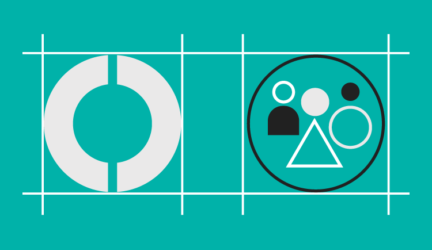New World of Digital Recruiting: Chatbots, Videos and Social Media

July 15, 2018
Carrier Management
By Mark Hollmer
Long gone are the days when employees printed their resumes and cover letters on fancy paper, worried about choosing the proper font, and put both documents in the mail. The idea of employers printing paper job advertisements is also a thing of the past. Insurers are acutely aware of these facts, exploring ever-evolving digital techniques to reach potential employees who live their lives through apps and conduct all their business electronically.
But which digital tools do carriers use the most? Which ones do they feel work best? Carrier Management posed these questions to recruitment executives from Allianz, a global property/casualty insurance carrier based in Munich with 140,000 employees; the PURE Group of Insurance Cos., a New York-based specialist group of personal insurance companies with 600 people on staff; and Root Insurance, a 100-employee InsurTech startup in Ohio focused on auto insurance. What they revealed is a mixture of tried-and-true methods, innovation and outright experimentation.
Allianz’ Digital Recruitment Story
Allianz sees a video game and a chatbot as two new digital tools that can help recruit young, dynamic and innovative employees.
The video game—Rise of the Drones—mixes dazzling shots of drones in action, sports show-style narration from a female British announcer, and a quiz about how the user would develop and market coverage for drones. Allie, the chatbot that helps users navigate through job listings via Facebook, is a virtual personality that attempts to draw out an applicant’s interests via text conversation in multiple languages.
Both these and other digital recruiting efforts are crucial ways to connect with creative and innovative employees, explained Nadja Gruber, an expert in global employer branding and e-recruiting with Allianz.
“We need the ones who dare with us to be those pioneers,” Gruber said. “We need those people who have the courage to try new things, and [these digital initiatives] can give us an advantage.”
To say that Allianz attracts legions of potential job applicants globally is an understatement. More than 3.5 million people visit the insurer’s online job board/career website annually, at which more than 1,200 jobs are posted each day, Gruber said. Human resources, in turn, manages 110,000 job applications each year, not including internal job candidates.
Beyond the online job board, Allianz wields a number of digital media tools to reach potential employees of all stripes. One of the biggest is LinkedIn, which has global reach. Allianz’s page on the site provides information about how to pursue an application and seek an interview, Gruber said.
Allianz’s overall strategy is one involving multiple digital recruiting options. There is the company’s Facebook page, for example, where aspiring candidates can tap into recruitment information, or there is virtual chat interaction with the Allie chatbot.
Instagram and a WhatsApp channel additionally give Allianz ways to interact with candidates, as does YouTube and a career blog. The insurer additionally counts a global application tool as part of its digital recruitment arsenal, used in 80 percent of Allianz’s markets so talent can apply online and with mobile devices. Allianz also taps digital options in Europe and other international markets to reach local candidates and meet their specific needs, Gruber said.
All of the digital efforts help jobseekers gain insight about what Allianz is like as an employer, with content on each platform geared to the interests of users.
Allianz’ digital recruitment efforts gained the attention of Swedish research company Potentialpark earlier this year, which gave it a first-place ranking globally in terms of digital recruiting communication. Allianz also touted the fact that it was able to stay No. 1 in Europe and Asia for the fifth year in a row.
While traditional avenues such as LinkedIn reach many more applicants, Gruber said that the Allie chatbot (launched in summer 2017) and drone video game (which debuted in September) have been interesting experiments with encouraging responses.
“You can surprise candidates if you offer the latest [digital recruiting] tools,” Gruber said. “If we take [the Allie chatbot], that was a great example. Almost no one used a chatbot for career purposes…I don’t know any other insurer who also uses a chatbot to recruit.”
Gruber said candidates don’t necessarily expect such technology and that it helps Allianz to overcome the stodgy image that insurers often have with younger candidates.
“We show, yes, the digitalization is there, and this is what gets appreciated by the candidates,” Gruber said.
As well, Gruber said that Allianz tries to be transparent through all the digital channels it relies on, using them to help candidates see what is happening by the scenes, where the jobs are and what values executives prioritize.
All digital options are used with a common challenge in mind, Gruber said: “The challenge is to put us on the short lists of candidates who want to put us on a short list of job choice.”
PURE’s Tried-and-True Tools
The PURE Group of Insurance Cos., which serves many high-net-worth individuals, relies on what have become tried-and-true tools for digital recruitment: primarily LinkedIn but also Facebook and Twitter. LinkedIn, which has long been a way for professionals to keep in touch and network with peers, is particularly useful because it has evolved into an employee recruitment platform, said Katherine Richardson, the company’s senior vice president and chief of human resources.
“There is a big place [for LinkedIn] in the marketplace right now,” Richardson said. “Their business model is really appealing. They get people to input their own resumes, and you can pay to search against that database. It is a really useful tool.”
With so many digital recruitment options in play these days, why would LinkedIn play such a prominent role? Richardson explained that the company’s web presence provides “a low friction connection point.”
“Your resume is already built into LinkedIn. We have software that helps us screen candidate pools, and if you have a LinkedIn profile you can apply for a job,” she said, adding that the system offers an easy way to track candidates with the appropriate credentials.
PURE uses more digital tools than LinkedIn, however. Richardson said the job site Indeed is a popular way to look for candidates because as an aggregator it brings together postings from a number of different sites.
“There are a lot of people [using Indeed] who learn about our opportunities because they were scraped from somewhere else into this job aggregator,” Richardson said. “It is more dominant than Monster or CareerBuilder; those were hot 10 years ago.”
Richardson noted that PURE also experiments with its job recruitment efforts. The company recently formed a relationship with The Muse, where users can find career advice on interview tips, resume and cover letter samples, and also search for jobs.
The relationship is only a couple months old, but Richardson said the goal is to use The Muse (whose target audience is millennials) to get PURE’s employment brand actively out in front of people.
“They helped us create a website with content specific to PURE, where we have videos, testimonials from employees and pictures of the organization,” Richardson said. “They have interactive content where jobseekers can learn about looking for employment or aspects of businesses. At the same time, they can see profiles of different companies they might pursue.”
The Muse also allows links to be sent through Facebook, LinkedIn or other sites and, as a result, harness the whole company in its recruiting efforts.
“We have 600 employees around the country, all with their own presence in some of these digital media platforms. We can help them direct traffic to sites [where visitors can] explore who we are.”
Of course, PURE still relies on one old-fashioned job recruiting method along with the digital ones: networking.
“Knowing people who know people who know people is also a good source of talent, but it is a different world now,” Richardson said. “You can apply for 20 jobs in 30 minutes because there are all these digital tools that take the friction out of the process.”
Root—The Upstart
Root, as of April 24, 2018, had just 98 employees. It began to sell insurance only at the end of 2016, nearly two years after its initial founding.
The digital insurer is an industry upstart, using telematics to measure customers’ driving to help them get the best rates. Its digital recruitment strategy involves a mix of the tried-and-true (LinkedIn), experimentation, a job portal, and profession-specific online community job boards such as Stack Overflow and Dribbble (yes, with three B’s).
Clara Kridler, Root’s head of People, explains that Stack Overflow “is a community for engineers that has a job site component, so it is a place where you can pose questions and access resources for work you’re doing as an engineer” as well as look at job postings.
Dribbble, on the other hand, is an online community/job board for design and creative people, which Kridler said is “where people can showcase the work they have done, give context for what the project was and have contact with the broader community.”
In addition, Root has explored the use of paid advertising to targeted groups the company thinks might be interested in a given open position, tested mostly in LinkedIn. The ads don’t directly ask readers to “please apply.” Rather, they’re intended to see who clicks and engages with the content in the ad, and then Root reaches out to them proactively.
Root did this with a recent presentation by Chief Technology Officer Dan Manges, which Kridler took and developed for an advertisement for a target audience (the presentation was about engineering at Root).
“We were using content…that captures how we are, how we build technology and seeing who is drawn to that…They are engaging with this content explaining what we do,” Kridler said.
Often those who engage have related expertise and post comments, which presents an opportunity to see if the curious folks who did so would be interested in an opportunity.
Kridler said they’ve done this with just a few positions since initially experimenting with targeted ads about six months ago. They’ve found four job candidates through this method.
Root’s digital recruiting focuses strongly on the employer brand and promotes what a job candidate might experience at the company. In doing so, Kridler said, Root hopes “to attract and retain employees for a long time.”
Root also targets digital recruitment via eng.joinroot.com, an engineering-specific website that explains the company’s technology, how it builds software, its open positions and other relevant details in terms of engineering practices.
“The reason we built this website is primarily to attract talent, and we hope that going forward we can make one of these pages for each of our functional groups,” Kridler said.
This article was originally published to Carrier Management online July 16, 2017. You can view it here.





